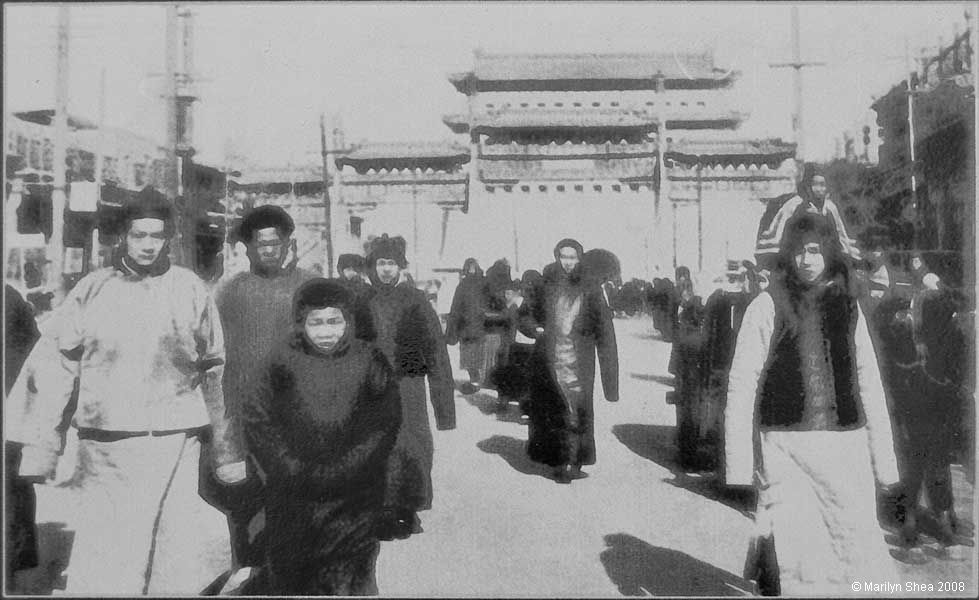 |
| By 1909, the Archery Watchtower was rebuilt. In 1906, the central portion of Zhengyangmen Tower 正阳门门楼 was reconstructed on the model of Chongwenmen and Xuanwumen, two other gates to the west and east of Zhengyangmen.
While the Eight Powers did extensive damage, the greatest damage was done for modernization after 1949, and again in 2008. Neither the Chongwenmen 崇文门 (Chóngwénmén), nor the Xuanwumen 宣武门 (Xuānwǔmén) gates survive. The gates were torn down in the 1960s to make room for Beijing's Second Ring Road. The Chongwenmen Gate was popularly called Hatamen after the Mongol Prince Hata who lived in a nearby palace. The gate was in the southeast of the Inner City wall. Xuanwumen was the southwest entrance to the Inner City. If you know Beijing, it is the area south of Chang'an Avenue and Xi Dan, the shopping street. Xuanwumen was modernized with new office buildings between 2000 and 2004. Chongwenmen and Xuanwumen are still used as subway and neighborhood names, but that is all that remains of their history. The construction of Tiananmen Square, the People's Hall, and The Museum of the Revolution required the removal of both the wall and smaller watchtowers, as well as the buildings that once filled much of what is now Tiananmen Square. |
http://hua.umf.maine.edu/China/HistoricBeijing/Qianmen/index.html
Last
update: August 2009
© Marilyn Shea, 2009